1 of 7
Download to read offline

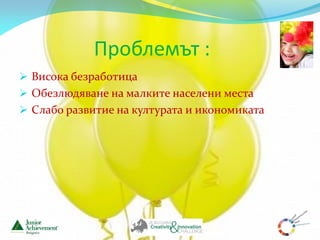
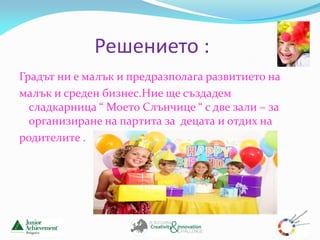
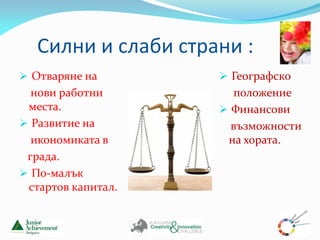
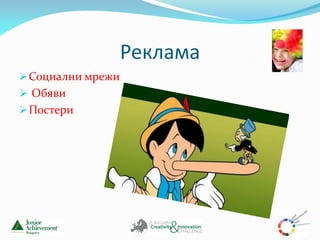
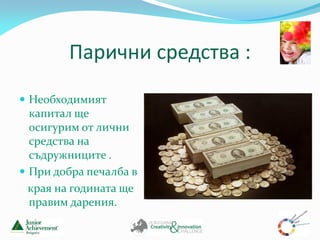

Ad
Recommended
108 ąĪą×ąŻ, ąĪąŠčäąĖčÅ - čĆąĄąĘčÄą╝ąĄ
108 ąĪą×ąŻ, ąĪąŠčäąĖčÅ - čĆąĄąĘčÄą╝ąĄJunior Achievement Bulgaria
╠²
ąĀąĄąĘčÄą╝ąĄ ąŠčé čĆą░ą▒ąŠčéą░čéą░ ąĮą░ 108 ąĪą×ąŻ, ą│čĆ. ąĪąŠčäąĖčÅ, ą┐ąŠ ą┐čĆąŠąĄą║čéą░ ą┐ąŠ ą║ąŠąĮą║čāčĆčüą░ "ąæąĖąĘąĮąĄčü ąĄčéąĖą║ą░" ąĘą░ 2013-2014 čāč湥ą▒ąĮą░ ą│ąŠą┤ąĖąĮą░Spanish 3 environmental unit plan
Spanish 3 environmental unit planpasaportealmundo
╠²
This document provides a curriculum planning template for a thematic unit on environmental issues and solutions. It includes three targeted performance assessments at different proficiency levels:
1. At the beginning level, students will talk in small groups about environmental issues and ways to positively impact the environment.
2. At the developing level, students will listen to a video about conservation efforts in Costa Rica and read authentic texts summarizing environmental issues.
3. At the transitioning/refining level, students will choose an environmental issue to present, describing the problem, impacts, potential consequences, and solutions.
The template links the performance assessments to communication modes, language standards, target performance elements, culture standards, vocabulary and structures toEs hora de ayudar template spanish 4
Es hora de ayudar template spanish 4pasaportealmundo
╠²
This document provides a curriculum planning template for a thematic unit on social action projects. It includes three assessments with increasing levels of complexity:
1. Students discuss social action project ideas and provide feedback on each other's ideas.
2. Students analyze a short video about poverty and complete a listening comprehension assessment.
3. Students create a public service announcement promoting their own proposed social action project using an online presentation tool.
The template provides information on communication modes, performance assessments, language skills standards, and target proficiency levels for each assessment.Iuavcamp presentazione anna ceccolin
Iuavcamp presentazione anna ceccolinguest39319dbe
╠²
La 'lanterna schiara' ├© un'opera progettata dall'architetto Greg Lynn e realizzata con materiali compositi leggeri e a basso consumo energetico, presentata al SIGGRAPH 2009. Questo progetto rappresenta l'intersezione tra design digitale e costruzione, utilizzando tecniche di taglio CNC per creare forme complesse e innovative. I materiali impiegati sono pi├╣ ecologici rispetto ai tradizionali, evidenziando l'evoluzione verso sistemi di costruzione personalizzati.Foreign language week 2011 revised
Foreign language week 2011 revisedpasaportealmundo
╠²
Foreign Language Week will celebrate Spanish-speaking countries through foods, dances, music and other activities. Students will research and prepare items from countries like Spain, Mexico, Puerto Rico and Cuba to share during the event. They will sign up to lead activities on specific days, such as preparing authentic foods from a country for Food Day, teaching classmates a traditional dance from their assigned country on Dance Day, or presenting a children's song in Spanish on Song Day. All work must be approved by the teacher ahead of time.Let's take a quiz! Round 1!
Let's take a quiz! Round 1!guestd13118
╠²
Daniel Northup hosts a quiz show with contestants answering questions on game pods. Contestants are penalized for slow answers and scores are displayed on a monitor. The first round involves multiple choice, true/false, and matching questions about science, celebrities, time, and measuring devices. Contestants' scores are shown at the end of the round.Ellen Greenberg - Creativity in Business
Ellen Greenberg - Creativity in BusinessJunior Achievement Bulgaria
╠²
This document summarizes a presentation on creativity in business. It defines creativity as the ability to bring something new into existence through a process that is novel, useful, and understandable. The creative process involves preparation, incubation, illumination, and verification. Characteristics of creative individuals include openness to experience, curiosity, independence, willingness to take risks, and persistence. Six things that can kill creativity are evaluation, surveillance, rewards, competition, restricted choices, and extrinsic orientation. The presentation encourages training, intrinsic motivation, allowing for failure, open communication, autonomy, flexibility, and reducing rules to foster creativity.Acci├│n social unos enlaces
Acci├│n social unos enlacespasaportealmundo
╠²
The document provides a list of websites compiled by peers on various topics, including ending poverty and hunger, universal education, gender equality, child health, maternal health, combating HIV/AIDS, environmental sustainability, and global partnerships. It emphasizes the need for users to verify the quality of the information on these sites before using them. Additional resources are suggested for further exploration in Spanish.Spanish 1 friends unidad 1 etapa 2
Spanish 1 friends unidad 1 etapa 2pasaportealmundo
╠²
This curriculum unit focuses on the theme of friends and peers. Students will work on identifying people from physical descriptions, completing a survey about their best friend, and presenting descriptions of two of their friends. The performance assessments target beginning, developing, and transitioning proficiency levels in interpersonal, interpretive, and presentational communication. Students will learn vocabulary for physical and personality attributes and structures like the present tense of ser and tener to be successful. The unit connects to standards about beliefs and attitudes towards friendships, popular media, and comparing language structures and cultural characteristics.Voice thread instructions for students
Voice thread instructions for studentspasaportealmundo
╠²
The document provides instructions for students to create and comment on a VoiceThread project in Spanish. It outlines how to log in to VoiceThread, upload photos or URLs, leave voice comments by selecting the record button, and save and share the completed project. It also describes how to delete recordings, view classmates' projects, and leave at least two voice and two text comments on others' projects in Spanish.Proyecto de acci├│n social esp4 2010
Proyecto de acci├│n social esp4 2010pasaportealmundo
╠²
The document provides instructions for a social action project where students will create a digital poster (glog) promoting awareness for one of the UN's eight Millennium Development Goals. It outlines the requirements for the project, which include identifying an issue and goals for a campaign, educating an audience, and calling others to action to support the cause. Students are given several work days to research their topic, create a draft of their glog, and incorporate written descriptions, images, and a video.Chapter 10
Chapter 10Kathleen Talbot
╠²
Implementing curriculum changes requires consideration of stakeholders like teachers, parents, and students. It is a process that takes 3-5 years if done properly with planning, revision, and patience. A proposed change would teach each student one musical instrument by 8th grade to provide a well-rounded education, but it must gain support from focus groups of parents and teachers by addressing their questions first.ąōąŠą┤ąĖčłąĄąĮ ąŠčéč湥čé ąĮą░ ąöąČčāąĮąĖčŖčĆ ąÉčćąĖą╣ą▓ą╝čŖąĮčé ąæčŖą╗ą│ą░čĆąĖčÅ 2011
ąōąŠą┤ąĖčłąĄąĮ ąŠčéč湥čé ąĮą░ ąöąČčāąĮąĖčŖčĆ ąÉčćąĖą╣ą▓ą╝čŖąĮčé ąæčŖą╗ą│ą░čĆąĖčÅ 2011Junior Achievement Bulgaria
╠²
Junior Achievement Bulgaria's 2011 annual report highlights the organization's achievements in inspiring young minds. In 2011, JA Bulgaria:
1) Reached over 31,000 students through its entrepreneurship education programs in 579 schools and universities, taught by 617 teachers.
2) Received international recognition with the Model Organization Award from JA-YE Europe for the fourth consecutive year for program quality.
3) Trained 300 new teachers to deliver JA's elementary school programs, expanding access to entrepreneurship education.Instructional and public technology powerpoint
Instructional and public technology powerpointtlgmckinney
╠²
Instructional and Public Technology involves educators and students in new ways. Educators strive to manifest true learning in students. Instructional design is a systematic approach to evaluating student needs, designing instructional material, and evaluating how material is taught. The ADDIE model of analysis, design, development, implementation, and evaluation is a main instructional design model used by educators. Communication is key to a healthy learning environment. Under the Texas Public Information Act, certain information about public school employees is available through public information requests.ąŻč湥ą▒ąĮąĖ ą┐čĆąŠą│čĆą░ą╝ąĖ ąĮą░ ąöąČčāąĮąĖčŖčĆ ąÉčćąĖą╣ą▓ą╝čŖąĮčé ąĘą░ ąŠą▒čāč湥ąĮąĖąĄ ą┐ąŠ ą┐čĆąŠčäąĖą╗ąĖčĆą░ąĮą░ ą┐ąŠą┤ą│ąŠč鹊ą▓ą║ą░ ąóąĄ...
ąŻč湥ą▒ąĮąĖ ą┐čĆąŠą│čĆą░ą╝ąĖ ąĮą░ ąöąČčāąĮąĖčŖčĆ ąÉčćąĖą╣ą▓ą╝čŖąĮčé ąĘą░ ąŠą▒čāč湥ąĮąĖąĄ ą┐ąŠ ą┐čĆąŠčäąĖą╗ąĖčĆą░ąĮą░ ą┐ąŠą┤ą│ąŠč鹊ą▓ą║ą░ ąóąĄ...Junior Achievement Bulgaria
╠²
Web 2.0 tools
Web 2.0 toolspasaportealmundo
╠²
The document lists various Web 2.0 tools categorized into groups such as course management systems, wikis, free websites, social networking sites, videoconferencing, messaging, blogging, media creation tools, surveys, and more. Each tool is listed along with its website URL and potential uses for education. The tools could help teachers explore options for incorporating technology into their classrooms.Changing the Nature of Urban Logistics
Changing the Nature of Urban Logisticsbhmarshall
╠²
The document discusses AmazonFresh's innovative urban logistics services, including same-day delivery options and the future implementation of drone delivery through Amazon Prime Air. It also highlights the significance of big data in handling vast amounts of information, focusing on its five key aspects: volume, variety, velocity, viability, and value. Additionally, the presentation covers tools and technologies like Apache Hadoop and Amazon Kinesis that facilitate big data processing and predictive analytics.ą¤čĆąĄą┤ą┐čĆąĖąĄą╝ą░č湥čüą║ą░čéą░ ą░ą║čéąĖą▓ąĮąŠčüčé ą▓ ąæčŖą╗ą│ą░čĆąĖčÅ
ą¤čĆąĄą┤ą┐čĆąĖąĄą╝ą░č湥čüą║ą░čéą░ ą░ą║čéąĖą▓ąĮąŠčüčé ą▓ ąæčŖą╗ą│ą░čĆąĖčÅPetar Petrov
╠²
ą¤čĆąĄąĘąĄąĮčéą░čåąĖčÅ ąŠčé ą║ąŠąĮč乥čĆąĄąĮčåąĖčÅčéą░ "ąÉą▓ą░ąĮą│ą░čĆą┤ąĮąĖ ąĮą░čāčćąĮąĖ ąĖąĮčüčéčĆčāą╝ąĄąĮčéąĖ ą▓ čāą┐čĆą░ą▓ą╗ąĄąĮąĖąĄč鹊" - ąŻąØąĪąĪ - ąĀą░ą▓ą┤ą░, čüąĄą┐č鹥ą╝ą▓čĆąĖ 2013 ą│.ąØą░ą╣-ą┤ąŠą▒čŖčĆ ą╝ą╗ą░ą┤ ą┐čĆąĄą┤ą┐čĆąĖąĄą╝ą░čć ąĮą░ ą¤ą╗ąŠą▓ą┤ąĖą▓: ąōąĄąŠčĆą│ąĖ ąóąĖčéčÄą║ąŠą▓
ąØą░ą╣-ą┤ąŠą▒čŖčĆ ą╝ą╗ą░ą┤ ą┐čĆąĄą┤ą┐čĆąĖąĄą╝ą░čć ąĮą░ ą¤ą╗ąŠą▓ą┤ąĖą▓: ąōąĄąŠčĆą│ąĖ ąóąĖčéčÄą║ąŠą▓StartUP@Plovdiv
╠²
ąōąĄąŠčĆą│ąĖ ąóąĖčéčÄą║ąŠą▓, ąĘą░ą╝ąĄčüčéąĮąĖą║-ą║ą╝ąĄčé ŌĆ׹öąĄčåą░čéą░, ą╝ą╗ą░ą┤ąĄąČčéą░ ąĖ čüą┐ąŠčĆčéą░ŌĆ£Module 2 overcome fears & assess your potential bg
Module 2 overcome fears & assess your potential bgrestartplatform
╠²
Module 2 overcome fears & assess your potential Bulgarian translationąōąŠą┤ąĖčłąĄąĮ ąŠčéč湥čé 2016-2017
ąōąŠą┤ąĖčłąĄąĮ ąŠčéč湥čé 2016-2017Junior Achievement Bulgaria
╠²
ąōąŠą┤ąĖčłąĄąĮ ąŠčéč湥čé 2016-2017 ąĮą░ ąöąČčāąĮąĖčŖčĆ ąÉčćąĖą╣ą▓ą╝čŖąĮčé ąæčŖą╗ą│ą░čĆąĖčÅJA Bulgaria CoE 2015-2016 UNGC
JA Bulgaria CoE 2015-2016 UNGCJunior Achievement Bulgaria
╠²
Junior Achievement Bulgaria reaffirms its support for the United Nations Global Compact and its ten principles related to human rights, labor, environment, and anti-corruption. It describes actions taken to promote the UNGC, including emphasizing their commitment in public appearances and including the UNGC logo in email signatures and websites. It also details partnerships with businesses to implement educational programs aligned with the UNGC principles, such as improving financial literacy and supporting social innovation. Junior Achievement Bulgaria works to embed the UNGC principles in its strategy, educational content on green entrepreneurship, and youth entrepreneurship competitions.More Related Content
Viewers also liked (10)
Spanish 1 friends unidad 1 etapa 2
Spanish 1 friends unidad 1 etapa 2pasaportealmundo
╠²
This curriculum unit focuses on the theme of friends and peers. Students will work on identifying people from physical descriptions, completing a survey about their best friend, and presenting descriptions of two of their friends. The performance assessments target beginning, developing, and transitioning proficiency levels in interpersonal, interpretive, and presentational communication. Students will learn vocabulary for physical and personality attributes and structures like the present tense of ser and tener to be successful. The unit connects to standards about beliefs and attitudes towards friendships, popular media, and comparing language structures and cultural characteristics.Voice thread instructions for students
Voice thread instructions for studentspasaportealmundo
╠²
The document provides instructions for students to create and comment on a VoiceThread project in Spanish. It outlines how to log in to VoiceThread, upload photos or URLs, leave voice comments by selecting the record button, and save and share the completed project. It also describes how to delete recordings, view classmates' projects, and leave at least two voice and two text comments on others' projects in Spanish.Proyecto de acci├│n social esp4 2010
Proyecto de acci├│n social esp4 2010pasaportealmundo
╠²
The document provides instructions for a social action project where students will create a digital poster (glog) promoting awareness for one of the UN's eight Millennium Development Goals. It outlines the requirements for the project, which include identifying an issue and goals for a campaign, educating an audience, and calling others to action to support the cause. Students are given several work days to research their topic, create a draft of their glog, and incorporate written descriptions, images, and a video.Chapter 10
Chapter 10Kathleen Talbot
╠²
Implementing curriculum changes requires consideration of stakeholders like teachers, parents, and students. It is a process that takes 3-5 years if done properly with planning, revision, and patience. A proposed change would teach each student one musical instrument by 8th grade to provide a well-rounded education, but it must gain support from focus groups of parents and teachers by addressing their questions first.ąōąŠą┤ąĖčłąĄąĮ ąŠčéč湥čé ąĮą░ ąöąČčāąĮąĖčŖčĆ ąÉčćąĖą╣ą▓ą╝čŖąĮčé ąæčŖą╗ą│ą░čĆąĖčÅ 2011
ąōąŠą┤ąĖčłąĄąĮ ąŠčéč湥čé ąĮą░ ąöąČčāąĮąĖčŖčĆ ąÉčćąĖą╣ą▓ą╝čŖąĮčé ąæčŖą╗ą│ą░čĆąĖčÅ 2011Junior Achievement Bulgaria
╠²
Junior Achievement Bulgaria's 2011 annual report highlights the organization's achievements in inspiring young minds. In 2011, JA Bulgaria:
1) Reached over 31,000 students through its entrepreneurship education programs in 579 schools and universities, taught by 617 teachers.
2) Received international recognition with the Model Organization Award from JA-YE Europe for the fourth consecutive year for program quality.
3) Trained 300 new teachers to deliver JA's elementary school programs, expanding access to entrepreneurship education.Instructional and public technology powerpoint
Instructional and public technology powerpointtlgmckinney
╠²
Instructional and Public Technology involves educators and students in new ways. Educators strive to manifest true learning in students. Instructional design is a systematic approach to evaluating student needs, designing instructional material, and evaluating how material is taught. The ADDIE model of analysis, design, development, implementation, and evaluation is a main instructional design model used by educators. Communication is key to a healthy learning environment. Under the Texas Public Information Act, certain information about public school employees is available through public information requests.ąŻč湥ą▒ąĮąĖ ą┐čĆąŠą│čĆą░ą╝ąĖ ąĮą░ ąöąČčāąĮąĖčŖčĆ ąÉčćąĖą╣ą▓ą╝čŖąĮčé ąĘą░ ąŠą▒čāč湥ąĮąĖąĄ ą┐ąŠ ą┐čĆąŠčäąĖą╗ąĖčĆą░ąĮą░ ą┐ąŠą┤ą│ąŠč鹊ą▓ą║ą░ ąóąĄ...
ąŻč湥ą▒ąĮąĖ ą┐čĆąŠą│čĆą░ą╝ąĖ ąĮą░ ąöąČčāąĮąĖčŖčĆ ąÉčćąĖą╣ą▓ą╝čŖąĮčé ąĘą░ ąŠą▒čāč湥ąĮąĖąĄ ą┐ąŠ ą┐čĆąŠčäąĖą╗ąĖčĆą░ąĮą░ ą┐ąŠą┤ą│ąŠč鹊ą▓ą║ą░ ąóąĄ...Junior Achievement Bulgaria
╠²
Web 2.0 tools
Web 2.0 toolspasaportealmundo
╠²
The document lists various Web 2.0 tools categorized into groups such as course management systems, wikis, free websites, social networking sites, videoconferencing, messaging, blogging, media creation tools, surveys, and more. Each tool is listed along with its website URL and potential uses for education. The tools could help teachers explore options for incorporating technology into their classrooms.Changing the Nature of Urban Logistics
Changing the Nature of Urban Logisticsbhmarshall
╠²
The document discusses AmazonFresh's innovative urban logistics services, including same-day delivery options and the future implementation of drone delivery through Amazon Prime Air. It also highlights the significance of big data in handling vast amounts of information, focusing on its five key aspects: volume, variety, velocity, viability, and value. Additionally, the presentation covers tools and technologies like Apache Hadoop and Amazon Kinesis that facilitate big data processing and predictive analytics.ąōąŠą┤ąĖčłąĄąĮ ąŠčéč湥čé ąĮą░ ąöąČčāąĮąĖčŖčĆ ąÉčćąĖą╣ą▓ą╝čŖąĮčé ąæčŖą╗ą│ą░čĆąĖčÅ 2011
ąōąŠą┤ąĖčłąĄąĮ ąŠčéč湥čé ąĮą░ ąöąČčāąĮąĖčŖčĆ ąÉčćąĖą╣ą▓ą╝čŖąĮčé ąæčŖą╗ą│ą░čĆąĖčÅ 2011Junior Achievement Bulgaria
╠²
ąŻč湥ą▒ąĮąĖ ą┐čĆąŠą│čĆą░ą╝ąĖ ąĮą░ ąöąČčāąĮąĖčŖčĆ ąÉčćąĖą╣ą▓ą╝čŖąĮčé ąĘą░ ąŠą▒čāč湥ąĮąĖąĄ ą┐ąŠ ą┐čĆąŠčäąĖą╗ąĖčĆą░ąĮą░ ą┐ąŠą┤ą│ąŠč鹊ą▓ą║ą░ ąóąĄ...
ąŻč湥ą▒ąĮąĖ ą┐čĆąŠą│čĆą░ą╝ąĖ ąĮą░ ąöąČčāąĮąĖčŖčĆ ąÉčćąĖą╣ą▓ą╝čŖąĮčé ąĘą░ ąŠą▒čāč湥ąĮąĖąĄ ą┐ąŠ ą┐čĆąŠčäąĖą╗ąĖčĆą░ąĮą░ ą┐ąŠą┤ą│ąŠč鹊ą▓ą║ą░ ąóąĄ...Junior Achievement Bulgaria
╠²
Similar to Pgm yakoruda 2 miasto (10)
ą¤čĆąĄą┤ą┐čĆąĖąĄą╝ą░č湥čüą║ą░čéą░ ą░ą║čéąĖą▓ąĮąŠčüčé ą▓ ąæčŖą╗ą│ą░čĆąĖčÅ
ą¤čĆąĄą┤ą┐čĆąĖąĄą╝ą░č湥čüą║ą░čéą░ ą░ą║čéąĖą▓ąĮąŠčüčé ą▓ ąæčŖą╗ą│ą░čĆąĖčÅPetar Petrov
╠²
ą¤čĆąĄąĘąĄąĮčéą░čåąĖčÅ ąŠčé ą║ąŠąĮč乥čĆąĄąĮčåąĖčÅčéą░ "ąÉą▓ą░ąĮą│ą░čĆą┤ąĮąĖ ąĮą░čāčćąĮąĖ ąĖąĮčüčéčĆčāą╝ąĄąĮčéąĖ ą▓ čāą┐čĆą░ą▓ą╗ąĄąĮąĖąĄč鹊" - ąŻąØąĪąĪ - ąĀą░ą▓ą┤ą░, čüąĄą┐č鹥ą╝ą▓čĆąĖ 2013 ą│.ąØą░ą╣-ą┤ąŠą▒čŖčĆ ą╝ą╗ą░ą┤ ą┐čĆąĄą┤ą┐čĆąĖąĄą╝ą░čć ąĮą░ ą¤ą╗ąŠą▓ą┤ąĖą▓: ąōąĄąŠčĆą│ąĖ ąóąĖčéčÄą║ąŠą▓
ąØą░ą╣-ą┤ąŠą▒čŖčĆ ą╝ą╗ą░ą┤ ą┐čĆąĄą┤ą┐čĆąĖąĄą╝ą░čć ąĮą░ ą¤ą╗ąŠą▓ą┤ąĖą▓: ąōąĄąŠčĆą│ąĖ ąóąĖčéčÄą║ąŠą▓StartUP@Plovdiv
╠²
ąōąĄąŠčĆą│ąĖ ąóąĖčéčÄą║ąŠą▓, ąĘą░ą╝ąĄčüčéąĮąĖą║-ą║ą╝ąĄčé ŌĆ׹öąĄčåą░čéą░, ą╝ą╗ą░ą┤ąĄąČčéą░ ąĖ čüą┐ąŠčĆčéą░ŌĆ£Module 2 overcome fears & assess your potential bg
Module 2 overcome fears & assess your potential bgrestartplatform
╠²
Module 2 overcome fears & assess your potential Bulgarian translationąØą░ą╣-ą┤ąŠą▒čŖčĆ ą╝ą╗ą░ą┤ ą┐čĆąĄą┤ą┐čĆąĖąĄą╝ą░čć ąĮą░ ą¤ą╗ąŠą▓ą┤ąĖą▓: ąōąĄąŠčĆą│ąĖ ąóąĖčéčÄą║ąŠą▓
ąØą░ą╣-ą┤ąŠą▒čŖčĆ ą╝ą╗ą░ą┤ ą┐čĆąĄą┤ą┐čĆąĖąĄą╝ą░čć ąĮą░ ą¤ą╗ąŠą▓ą┤ąĖą▓: ąōąĄąŠčĆą│ąĖ ąóąĖčéčÄą║ąŠą▓StartUP@Plovdiv
╠²
Ad
More from Junior Achievement Bulgaria (20)
ąōąŠą┤ąĖčłąĄąĮ ąŠčéč湥čé 2016-2017
ąōąŠą┤ąĖčłąĄąĮ ąŠčéč湥čé 2016-2017Junior Achievement Bulgaria
╠²
ąōąŠą┤ąĖčłąĄąĮ ąŠčéč湥čé 2016-2017 ąĮą░ ąöąČčāąĮąĖčŖčĆ ąÉčćąĖą╣ą▓ą╝čŖąĮčé ąæčŖą╗ą│ą░čĆąĖčÅJA Bulgaria CoE 2015-2016 UNGC
JA Bulgaria CoE 2015-2016 UNGCJunior Achievement Bulgaria
╠²
Junior Achievement Bulgaria reaffirms its support for the United Nations Global Compact and its ten principles related to human rights, labor, environment, and anti-corruption. It describes actions taken to promote the UNGC, including emphasizing their commitment in public appearances and including the UNGC logo in email signatures and websites. It also details partnerships with businesses to implement educational programs aligned with the UNGC principles, such as improving financial literacy and supporting social innovation. Junior Achievement Bulgaria works to embed the UNGC principles in its strategy, educational content on green entrepreneurship, and youth entrepreneurship competitions.JA Bulgaria Annual Report 2013-2014
JA Bulgaria Annual Report 2013-2014Junior Achievement Bulgaria
╠²
The document outlines Junior Achievement Bulgaria's partnership initiatives to enhance entrepreneurship and economic education among students in 2013 and 2014, including collaborations with companies like Coca-Cola and Amgen. It highlights the involvement of mentors, events like the 'Financial Innovation Camp,' and the importance of practical business education to prepare young people for future challenges. The organization expresses gratitude to its partners and contributors for fostering a supportive educational ecosystem, emphasizing the role of community and volunteer involvement in shaping the entrepreneurial landscape in Bulgaria.ąØążąĪąō ąĪąŠčäąĖčÅ - čĆąĄąĘčÄą╝ąĄ
ąØążąĪąō ąĪąŠčäąĖčÅ - čĆąĄąĘčÄą╝ąĄJunior Achievement Bulgaria
╠²
ąĀąĄąĘčÄą╝ąĄ ąŠčé čĆą░ą▒ąŠčéą░čéą░ ąĮą░ ąØążąĪąō, ąĪąŠčäąĖčÅ, ą┐ąŠ ą┐čĆąŠąĄą║čéą░ ą┐ąŠ ą║ąŠąĮą║čāčĆčüą░ "ąæąĖąĘąĮąĄčü ąĄčéąĖą║ą░" ąĘą░ 2013-2014 čāč湥ą▒ąĮą░ ą│ąŠą┤ąĖąĮą░ąĢąō "ą¤ą╗ąŠą▓ą┤ąĖą▓" - čĆąĄąĘčÄą╝ąĄ
ąĢąō "ą¤ą╗ąŠą▓ą┤ąĖą▓" - čĆąĄąĘčÄą╝ąĄJunior Achievement Bulgaria
╠²
ąĀąĄąĘčÄą╝ąĄ ąŠčé čĆą░ą▒ąŠčéą░čéą░ ąĮą░ ąĢąō "ą¤ą╗ąŠą▓ą┤ąĖą▓", ą│čĆ. ą¤ą╗ąŠą▓ą┤ąĖą▓, ą┐ąŠ ą┐čĆąŠąĄą║čéą░ ą┐ąŠ ą║ąŠąĮą║čāčĆčüą░ "ąæąĖąĘąĮąĄčü ąĄčéąĖą║ą░" ąĘą░ 2013-2014 čāč湥ą▒ąĮą░ ą│ąŠą┤ąĖąĮą░JA Bulgaria Annual Report 2012
JA Bulgaria Annual Report 2012Junior Achievement Bulgaria
╠²
The annual report of Junior Achievement Bulgaria highlights significant advancements in entrepreneurship education since its establishment in 1997, achieving 80% coverage in elementary schools and training over 1,500 new teachers. The organization emphasizes partnerships with the government and businesses, resulting in successful programs and recognition, including the patronage of the Bulgarian president for key initiatives. Additionally, Junior Achievement Bulgaria has been active in promoting economic literacy and entrepreneurship among youth, with various programs and events aimed at preparing them for future careers.ą¤ąĖčüą╝ąŠ ą┐ąŠčéą▓čŖčƹȹ┤ąĄąĮąĖąĄ ąŠčé ą¤čĆąĄąĘąĖą┤ąĄąĮčéą░ ą¤ą╗ąĄą▓ąĮąĄą╗ąĖąĄą▓ ąĘą░ ą┐ą░čéčĆąŠąĮ ąĮą░ ąĪą▓ąĄč鹊ą▓ąĮą░čéą░ čüąĄą┤ą╝ąĖčåą░ ą┐...
ą¤ąĖčüą╝ąŠ ą┐ąŠčéą▓čŖčƹȹ┤ąĄąĮąĖąĄ ąŠčé ą¤čĆąĄąĘąĖą┤ąĄąĮčéą░ ą¤ą╗ąĄą▓ąĮąĄą╗ąĖąĄą▓ ąĘą░ ą┐ą░čéčĆąŠąĮ ąĮą░ ąĪą▓ąĄč鹊ą▓ąĮą░čéą░ čüąĄą┤ą╝ąĖčåą░ ą┐...Junior Achievement Bulgaria
╠²
ąĪ ą┐ąĖčüą╝ąŠč鹊 ą¤čĆąĄąĘąĖą┤ąĄąĮčéą░ ąĮą░ ąæčŖą╗ą│ą░čĆąĖčÅ ąĀąŠčüąĄąĮ ą¤ą╗ąĄą▓ąĮąĄą╗ąĖąĄą▓ ą┐ąŠčéą▓čŖčƹȹ┤ą░ą▓ą░ ą│ąŠč鹊ą▓ąĮąŠčüčéčéą░ čüąĖ ą┤ą░ ąĄ ą┐ą░čéčĆąŠąĮ ąĮą░ ąĪą▓ąĄč鹊ą▓ąĮą░čéą░ čüąĄą┤ą╝ąĖčåą░ ą┐ąŠ ą┐čĆąĄą┤ą┐čĆąĖąĄą╝ą░č湥čüčéą▓ąŠ ą▓ ąæčŖą╗ą│ą░čĆąĖčÅ ąĘą░ ą▓č鹊čĆą░ ą┐ąŠčĆąĄą┤ąĮą░ ą│ąŠą┤ąĖąĮą░.ąĪą×ąŻ "ąÜąŠąĘą╝ą░ ąóčĆąĖčćą║ąŠą▓", ą│čĆ. ąÆčĆą░čåą░ - čĆą░ą▒ąŠčéą░ ą┐ąŠ ą║ąŠąĮą║čāčĆčüą░ ą┐ąŠ "ąæąĖąĘąĮąĄčü ąĄčéąĖą║ą░"
ąĪą×ąŻ "ąÜąŠąĘą╝ą░ ąóčĆąĖčćą║ąŠą▓", ą│čĆ. ąÆčĆą░čåą░ - čĆą░ą▒ąŠčéą░ ą┐ąŠ ą║ąŠąĮą║čāčĆčüą░ ą┐ąŠ "ąæąĖąĘąĮąĄčü ąĄčéąĖą║ą░"Junior Achievement Bulgaria
╠²
ąØążąĪąō, ą│čĆ. ąĪąŠčäąĖčÅ - čĆą░ą▒ąŠčéą░ ą┐ąŠ ą║ąŠąĮą║čāčĆčüą░ ą┐ąŠ "ąæąĖąĘąĮąĄčü ąĄčéąĖą║ą░"
ąØążąĪąō, ą│čĆ. ąĪąŠčäąĖčÅ - čĆą░ą▒ąŠčéą░ ą┐ąŠ ą║ąŠąĮą║čāčĆčüą░ ą┐ąŠ "ąæąĖąĘąĮąĄčü ąĄčéąĖą║ą░"Junior Achievement Bulgaria
╠²
105 ąĪą×ąŻ "ąÉčéą░ąĮą░čü ąöą░ą╗č湥ą▓", ą│čĆ. ąĪąŠčäąĖčÅ - čĆą░ą▒ąŠčéą░ ą┐ąŠ ą║ąŠąĮą║čāčĆčüą░ ą┐ąŠ "ąæąĖąĘąĮąĄčü ąĄčéąĖą║ą░"
105 ąĪą×ąŻ "ąÉčéą░ąĮą░čü ąöą░ą╗č湥ą▓", ą│čĆ. ąĪąŠčäąĖčÅ - čĆą░ą▒ąŠčéą░ ą┐ąŠ ą║ąŠąĮą║čāčĆčüą░ ą┐ąŠ "ąæąĖąĘąĮąĄčü ąĄčéąĖą║ą░"Junior Achievement Bulgaria
╠²
ą£ąō "ąæą░ą▒ą░ ąóąŠąĮą║ą░", ą│čĆ. ąĀčāčüąĄ - čĆą░ą▒ąŠčéą░ ą┐ąŠ ą║ąŠąĮą║čāčĆčüą░ ą┐ąŠ "ąæąĖąĘąĮąĄčü ąĄčéąĖą║ą░"
ą£ąō "ąæą░ą▒ą░ ąóąŠąĮą║ą░", ą│čĆ. ąĀčāčüąĄ - čĆą░ą▒ąŠčéą░ ą┐ąŠ ą║ąŠąĮą║čāčĆčüą░ ą┐ąŠ "ąæąĖąĘąĮąĄčü ąĄčéąĖą║ą░"Junior Achievement Bulgaria
╠²
ą¤ąō "ąÆą░čüąĖą╗ ąæąĄčĆąŠąĮ", ą│čĆ. ąÆ. ąóčŖčĆąĮąŠą▓ąŠ - čĆą░ą▒ąŠčéą░ ą┐ąŠ ą║ąŠąĮą║čāčĆčüą░ ą┐ąŠ "ąæąĖąĘąĮąĄčü ąĄčéąĖą║ą░"
ą¤ąō "ąÆą░čüąĖą╗ ąæąĄčĆąŠąĮ", ą│čĆ. ąÆ. ąóčŖčĆąĮąŠą▓ąŠ - čĆą░ą▒ąŠčéą░ ą┐ąŠ ą║ąŠąĮą║čāčĆčüą░ ą┐ąŠ "ąæąĖąĘąĮąĄčü ąĄčéąĖą║ą░"Junior Achievement Bulgaria
╠²
ąōąŠą┤ąĖčłąĄąĮ ąŠčéč湥čé ąĮą░ ąöąČčāąĮąĖčŖčĆ ąÉčćąĖą╣ą▓ą╝čŖąĮčé ąæčŖą╗ą│ą░čĆąĖčÅ ąĘą░ 2011
ąōąŠą┤ąĖčłąĄąĮ ąŠčéč湥čé ąĮą░ ąöąČčāąĮąĖčŖčĆ ąÉčćąĖą╣ą▓ą╝čŖąĮčé ąæčŖą╗ą│ą░čĆąĖčÅ ąĘą░ 2011Junior Achievement Bulgaria
╠²
Junior Achievement Bulgaria provides entrepreneurship education programs to over 31,000 students through elementary, middle, and high school programs, as well as events and competitions, with the support of over 600 volunteer teachers and business professionals. In 2011, JA Bulgaria continued expanding its elementary school programs, trained 300 new teachers, and received its fifth consecutive Model Organization Award from JA-YE Europe in recognition of program quality and impact.JA Bulgaria Annual Report 2010
JA Bulgaria Annual Report 2010Junior Achievement Bulgaria
╠²
Junior Achievement Bulgaria held several events and programs in 2010 to promote entrepreneurship education among Bulgarian youth. Some of the key events and programs included:
1) The "Manager for a Day" initiative where over 1000 students shadowed managers and politicians to learn about various careers.
2) The "Smart Start" conference where 200 students learned entrepreneurship skills from successful entrepreneurs and managers through seminars and case studies.
3) Elementary and middle school programs that taught economic literacy and career skills to younger students, reaching over 350 participants in the annual "Juniors in Action" competition.JA Bulgaria Annual Report 2009
JA Bulgaria Annual Report 2009Junior Achievement Bulgaria
╠²
Junior Achievement Bulgaria is a non-profit organization that offers business education programs to students in Bulgaria. It was established in 1997 and reaches over 26,000 students annually through 27 educational courses taught in over 450 schools and 13 universities. Some of its key programs include Student Company, Enterprise Without Borders, Economics, Leadership and Success Skills, and Banks in Action. Junior Achievement Bulgaria aims to educate young Bulgarians about business, economics, and entrepreneurship.Nadia Vassileva - Global Labor Market Trends
Nadia Vassileva - Global Labor Market TrendsJunior Achievement Bulgaria
╠²
Presentation delivered at the JA Bulgaria Smart Start Conference - March 23, 2010Lubomir Popiordanov - Ethical and Responsible Business, Entrepreneurship with...
Lubomir Popiordanov - Ethical and Responsible Business, Entrepreneurship with...Junior Achievement Bulgaria
╠²
Presentation delivered at the JA Bulgaria Smart Start Conference - March 23, 2010ą¤ąĖčüą╝ąŠ ą┐ąŠčéą▓čŖčƹȹ┤ąĄąĮąĖąĄ ąŠčé ą¤čĆąĄąĘąĖą┤ąĄąĮčéą░ ą¤ą╗ąĄą▓ąĮąĄą╗ąĖąĄą▓ ąĘą░ ą┐ą░čéčĆąŠąĮ ąĮą░ ąĪą▓ąĄč鹊ą▓ąĮą░čéą░ čüąĄą┤ą╝ąĖčåą░ ą┐...
ą¤ąĖčüą╝ąŠ ą┐ąŠčéą▓čŖčƹȹ┤ąĄąĮąĖąĄ ąŠčé ą¤čĆąĄąĘąĖą┤ąĄąĮčéą░ ą¤ą╗ąĄą▓ąĮąĄą╗ąĖąĄą▓ ąĘą░ ą┐ą░čéčĆąŠąĮ ąĮą░ ąĪą▓ąĄč鹊ą▓ąĮą░čéą░ čüąĄą┤ą╝ąĖčåą░ ą┐...Junior Achievement Bulgaria
╠²
ąĪą×ąŻ "ąÜąŠąĘą╝ą░ ąóčĆąĖčćą║ąŠą▓", ą│čĆ. ąÆčĆą░čåą░ - čĆą░ą▒ąŠčéą░ ą┐ąŠ ą║ąŠąĮą║čāčĆčüą░ ą┐ąŠ "ąæąĖąĘąĮąĄčü ąĄčéąĖą║ą░"
ąĪą×ąŻ "ąÜąŠąĘą╝ą░ ąóčĆąĖčćą║ąŠą▓", ą│čĆ. ąÆčĆą░čåą░ - čĆą░ą▒ąŠčéą░ ą┐ąŠ ą║ąŠąĮą║čāčĆčüą░ ą┐ąŠ "ąæąĖąĘąĮąĄčü ąĄčéąĖą║ą░"Junior Achievement Bulgaria
╠²
ąØążąĪąō, ą│čĆ. ąĪąŠčäąĖčÅ - čĆą░ą▒ąŠčéą░ ą┐ąŠ ą║ąŠąĮą║čāčĆčüą░ ą┐ąŠ "ąæąĖąĘąĮąĄčü ąĄčéąĖą║ą░"
ąØążąĪąō, ą│čĆ. ąĪąŠčäąĖčÅ - čĆą░ą▒ąŠčéą░ ą┐ąŠ ą║ąŠąĮą║čāčĆčüą░ ą┐ąŠ "ąæąĖąĘąĮąĄčü ąĄčéąĖą║ą░"Junior Achievement Bulgaria
╠²
105 ąĪą×ąŻ "ąÉčéą░ąĮą░čü ąöą░ą╗č湥ą▓", ą│čĆ. ąĪąŠčäąĖčÅ - čĆą░ą▒ąŠčéą░ ą┐ąŠ ą║ąŠąĮą║čāčĆčüą░ ą┐ąŠ "ąæąĖąĘąĮąĄčü ąĄčéąĖą║ą░"
105 ąĪą×ąŻ "ąÉčéą░ąĮą░čü ąöą░ą╗č湥ą▓", ą│čĆ. ąĪąŠčäąĖčÅ - čĆą░ą▒ąŠčéą░ ą┐ąŠ ą║ąŠąĮą║čāčĆčüą░ ą┐ąŠ "ąæąĖąĘąĮąĄčü ąĄčéąĖą║ą░"Junior Achievement Bulgaria
╠²
ą£ąō "ąæą░ą▒ą░ ąóąŠąĮą║ą░", ą│čĆ. ąĀčāčüąĄ - čĆą░ą▒ąŠčéą░ ą┐ąŠ ą║ąŠąĮą║čāčĆčüą░ ą┐ąŠ "ąæąĖąĘąĮąĄčü ąĄčéąĖą║ą░"
ą£ąō "ąæą░ą▒ą░ ąóąŠąĮą║ą░", ą│čĆ. ąĀčāčüąĄ - čĆą░ą▒ąŠčéą░ ą┐ąŠ ą║ąŠąĮą║čāčĆčüą░ ą┐ąŠ "ąæąĖąĘąĮąĄčü ąĄčéąĖą║ą░"Junior Achievement Bulgaria
╠²
ą¤ąō "ąÆą░čüąĖą╗ ąæąĄčĆąŠąĮ", ą│čĆ. ąÆ. ąóčŖčĆąĮąŠą▓ąŠ - čĆą░ą▒ąŠčéą░ ą┐ąŠ ą║ąŠąĮą║čāčĆčüą░ ą┐ąŠ "ąæąĖąĘąĮąĄčü ąĄčéąĖą║ą░"
ą¤ąō "ąÆą░čüąĖą╗ ąæąĄčĆąŠąĮ", ą│čĆ. ąÆ. ąóčŖčĆąĮąŠą▓ąŠ - čĆą░ą▒ąŠčéą░ ą┐ąŠ ą║ąŠąĮą║čāčĆčüą░ ą┐ąŠ "ąæąĖąĘąĮąĄčü ąĄčéąĖą║ą░"Junior Achievement Bulgaria
╠²
ąōąŠą┤ąĖčłąĄąĮ ąŠčéč湥čé ąĮą░ ąöąČčāąĮąĖčŖčĆ ąÉčćąĖą╣ą▓ą╝čŖąĮčé ąæčŖą╗ą│ą░čĆąĖčÅ ąĘą░ 2011
ąōąŠą┤ąĖčłąĄąĮ ąŠčéč湥čé ąĮą░ ąöąČčāąĮąĖčŖčĆ ąÉčćąĖą╣ą▓ą╝čŖąĮčé ąæčŖą╗ą│ą░čĆąĖčÅ ąĘą░ 2011Junior Achievement Bulgaria
╠²
Lubomir Popiordanov - Ethical and Responsible Business, Entrepreneurship with...
Lubomir Popiordanov - Ethical and Responsible Business, Entrepreneurship with...Junior Achievement Bulgaria
╠²
Ad
Pgm yakoruda 2 miasto
- 1. ą¤ - ąŠč鹥ąĮčåąĖą░ą╗ąĮąĖ ąś - ąĮąŠą▓ą░čéąĖą▓ąĮąĖ ąØ - ąĄąĘą░ą▓ąĖčüąĖą╝ąĖ ą× - ą▒čüą╗čāąČą▓ą░čēąĖ ąÜ - čĆąĄą░čéąĖą▓ąĮąĖ ąś - ąĮč鹥ą╗ąĖą│ąĄąĮčéąĮąĖ ą× - ą▒ąĖčćą░čēąĖ
- 2. ą¤čĆąŠą▒ą╗ąĄą╝čŖčé : ’āś ąÆąĖčüąŠą║ą░ ą▒ąĄąĘčĆą░ą▒ąŠčéąĖčåą░ ’āś ą×ą▒ąĄąĘą╗čÄą┤čÅą▓ą░ąĮąĄ ąĮą░ ą╝ą░ą╗ą║ąĖč鹥 ąĮą░čüąĄą╗ąĄąĮąĖ ą╝ąĄčüčéą░ ’āś ąĪą╗ą░ą▒ąŠ čĆą░ąĘą▓ąĖčéąĖąĄ ąĮą░ ą║čāą╗čéčāčĆą░čéą░ ąĖ ąĖą║ąŠąĮąŠą╝ąĖą║ą░čéą░
- 3. ąĀąĄčłąĄąĮąĖąĄč鹊 : ąōčĆą░ą┤čŖčé ąĮąĖ ąĄ ą╝ą░ą╗čŖą║ ąĖ ą┐čĆąĄą┤čĆą░ąĘą┐ąŠą╗ą░ą│ą░ čĆą░ąĘą▓ąĖčéąĖąĄč鹊 ąĮą░ ą╝ą░ą╗čŖą║ ąĖ čüčĆąĄą┤ąĄąĮ ą▒ąĖąĘąĮąĄčü.ąØąĖąĄ čēąĄ čüčŖąĘą┤ą░ą┤ąĄą╝ čüą╗ą░ą┤ą║ą░čĆąĮąĖčåą░ ŌĆ£ ą£ąŠąĄč鹊 ąĪą╗čŖąĮčćąĖčåąĄ ŌĆ£ čü ą┤ą▓ąĄ ąĘą░ą╗ąĖ ŌĆō ąĘą░ ąŠčĆą│ą░ąĮąĖąĘąĖčĆą░ąĮąĄ ąĮą░ ą┐ą░čĆčéąĖčéą░ ąĘą░ ą┤ąĄčåą░čéą░ ąĖ ąŠčéą┤ąĖčģ ąĮą░ čĆąŠą┤ąĖč鹥ą╗ąĖč鹥 .
- 4. ąĪąĖą╗ąĮąĖ ąĖ čüą╗ą░ą▒ąĖ čüčéčĆą░ąĮąĖ : ’āś ą×čéą▓ą░čĆčÅąĮąĄ ąĮą░ ’āś ąōąĄąŠą│čĆą░čäčüą║ąŠ ąĮąŠą▓ąĖ čĆą░ą▒ąŠčéąĮąĖ ą┐ąŠą╗ąŠąČąĄąĮąĖąĄ ą╝ąĄčüčéą░. ’āś ążąĖąĮą░ąĮčüąŠą▓ąĖ ’āś ąĀą░ąĘą▓ąĖčéąĖąĄ ąĮą░ ą▓čŖąĘą╝ąŠąČąĮąŠčüčéąĖ ąĖą║ąŠąĮąŠą╝ąĖą║ą░čéą░ ą▓ ąĮą░ čģąŠčĆą░čéą░. ą│čĆą░ą┤ą░. ’āś ą¤ąŠ-ą╝ą░ą╗čŖą║ čüčéą░čĆč鹊ą▓ ą║ą░ą┐ąĖčéą░ą╗.
- 5. ąĀąĄą║ą╗ą░ą╝ą░ ’āś ąĪąŠčåąĖą░ą╗ąĮąĖ ą╝čĆąĄąČąĖ ’āś ą×ą▒čÅą▓ąĖ ’āś ą¤ąŠčüč鹥čĆąĖ
- 6. ą¤ą░čĆąĖčćąĮąĖ čüčĆąĄą┤čüčéą▓ą░ : ’éŚ ąØąĄąŠą▒čģąŠą┤ąĖą╝ąĖčÅčé ą║ą░ą┐ąĖčéą░ą╗ čēąĄ ąŠčüąĖą│čāčĆąĖą╝ ąŠčé ą╗ąĖčćąĮąĖ čüčĆąĄą┤čüčéą▓ą░ ąĮą░ čüčŖą┤čĆčāąČąĮąĖčåąĖč鹥 . ’éŚ ą¤čĆąĖ ą┤ąŠą▒čĆą░ ą┐ąĄčćą░ą╗ą▒ą░ ą▓ ą║čĆą░čÅ ąĮą░ ą│ąŠą┤ąĖąĮą░čéą░ čēąĄ ą┐čĆą░ą▓ąĖą╝ ą┤ą░čĆąĄąĮąĖčÅ.
- 7. ’āś ąĢą╝ąĖą│čÄą╗ ą×čĆčģą░ąĮ ’āś ąöąŠčĆą╝ąĖčł ąĪąĖčĆą░čćą║ąĖ ’āś ąśą▒čĆą░čģąĖą╝ ąĪąĖčĆą░čćą║ąĖ ’āś ąĪą░ą╣ą┤ąĄ ąöąČčāčĆąĖąĮą░ ’āś ąÉčģą╝ąĄą┤ ą×čĆčģą░ąĮ
